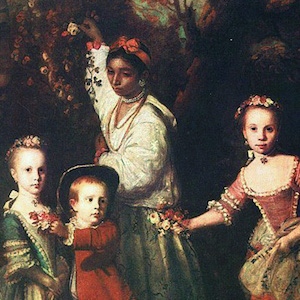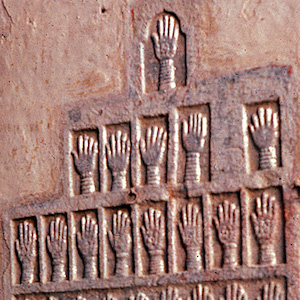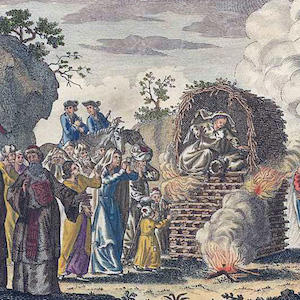Asia

Lila-Pilipina Brochure
The Lila-Pilipina Brochure is a creation of the feminist group of Filipino “comfort women" called Lila-Pilipina, who have banded together with feminist goals/messages for peace.

Lady of the Bridge, Tale of Genji Painting Scroll
The greatest work produced during the Heian era was The Tale of Genji by Murasaki Shikibu, lady-in-waiting to Empress Akiko. Considered the world’s first novel, Genji is written as an absorbing portrait of Heian court life, the splendor of its rituals, and aesthetic culture.

Bamboo River II, Tale of Genji Painting Scroll
The greatest work produced during the Heian era was The Tale of Genji by Murasaki Shikibu, lady-in-waiting to Empress Akiko. Considered the world’s first novel, Genji is written as an absorbing portrait of Heian court life, the splendor of its rituals, and aesthetic culture.

In Memoriam
In 1857, British rule in India was challenged when Indian sepoy troops of the British Indian Army began a year-long insurrection against the British. To the British, the most shocking aspect of the events in India was the massacre of white women and children by Indian men.

The Children of Edward Holden Cruttenden
This 18th-century painting of the children of Edward Cruttenden depicted with their ayah was painted in Britain by Joshua Reynolds. The earliest immigrants from India came to Britain as the servants of employees of the East India Company.

Photograph of Aung San Suu Kyi, Burmese Activist
This photograph of a powerful woman, Burmese activist Aung San Suu Kyi, shows her use of national dress in a Southeast Asian political context. Aung San Suu Kyi was educated overseas and married to an Englishman. Yet she always wears Burmese national dress complete with a flower in her hair.

Painting of Imelda Marcos, Philippine First Lady
Politicians are astute experts on the symbols and meaning of dress as part of self-representation. For women, the politics of dress are highly significant.

Sati Handprints
This image of the hands of Hindu widows and concubines of the ruling family of the Rajput state of Jodhpur, also known as Marwar, memorializes the devotion of these women and the high status of the men for whom the women committed sati.

Sati Engraving: A Gentoo Woman Burning Herself
From the late 1500s and into early 1800s, adventurous and artistically talented European men and a few women traveled to Asia and India, in particular, to see sites and cultures considered exotic.

Map of Ichan Qala
This type of image is known as a map. Represented on this paper is the old, walled city that forms a part of the larger, contemporary city of Khiva, Uzebekistan. This image covers one half of one side of the page of the map.